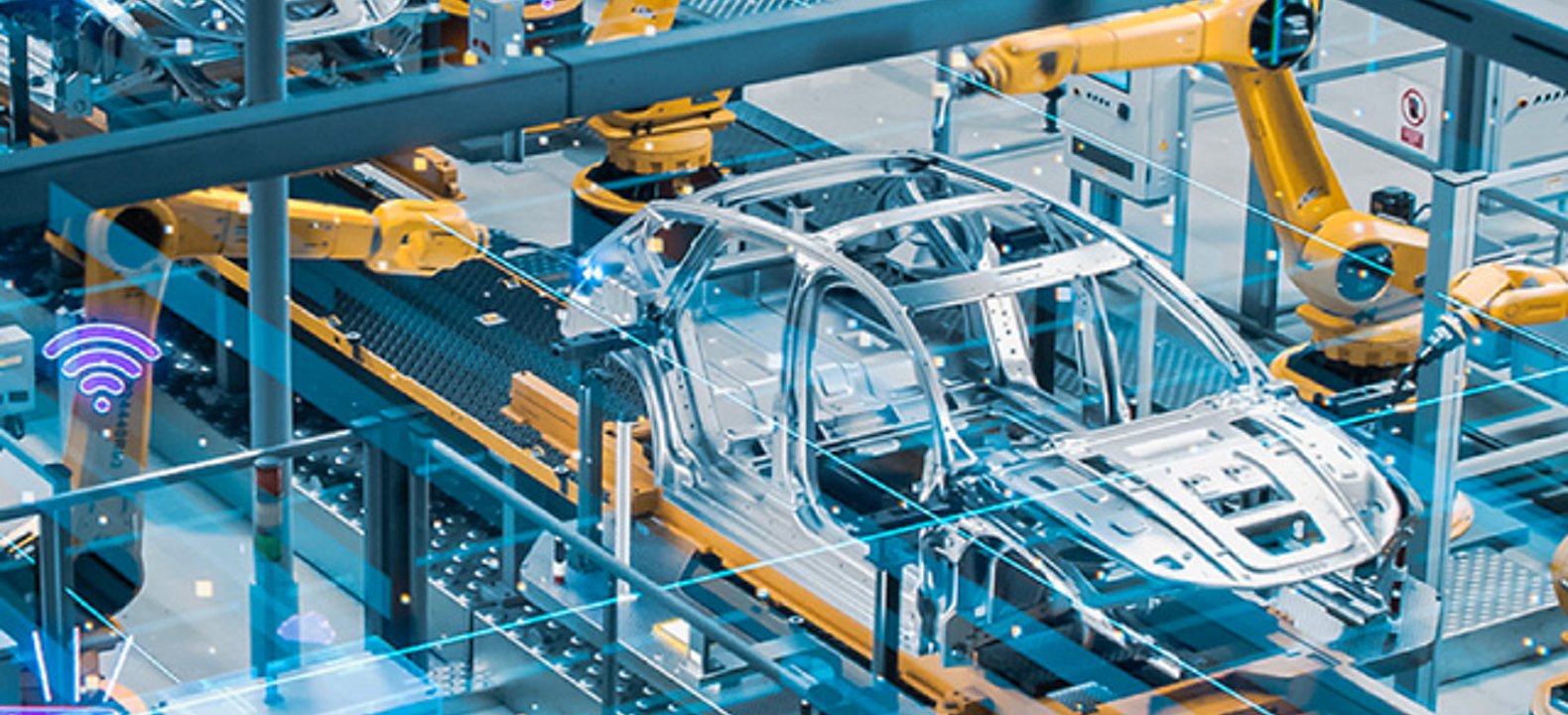Overview
Attract next-gen and digital-oriented talent.
Help train people for new jobs.
Facilitate better and broader usage.
We partner with you on innovative strategies.
Share this article:
Related content.
How augmented reality helps manufacturers handle the supply chain labor shortage.
Learn how adopting mature, mobile, network-based AR solutions can help to preserve your company’s technical expertise, improve training, and boost worker productivity.

How 5G is transforming manufacturing and construction with augmented reality.
Connecting AR technology to 5G networks opens numerous opportunities for businesses to improve their operations. From supporting equipment maintenance to optimizing parts repair, find how manufacturing and construction companies can use the tech.
5G: Capable device req'd; coverage not available in some areas. Some uses may require certain plan or feature; see

Manufacturing.
Unlock the value of industry 4.0 to implement new tools and data-driven processes for more flexible production, reduced waste, and enhanced productivity.

The supply chain labor shortage presented a critical challenge for the manufacturing industry over the past few years.
The 2021 Inbound Logistics Perspectives: 3PL Market Research Report noted that a significant percentage of shippers and third-party logistics (3PL) companies indicated finding, training, and retaining qualified workers was one of their main problems.1 Similarly, the Manufacturers' Outlook Survey by the National Association of Manufacturers found that a top business challenge for manufacturing companies is "attracting and retaining a quality workforce."2
While these negative retention trends can be attributed to a number of factors, such as accelerating retirement plans and changing work preferences3, the result is ultimately the same—unfilled supply chain job positions, which contribute to further product shortages and service delays.
Fortunately, a promising solution is on the horizon that leverages technology. Many supply chain companies are deploying advanced technologies, such as robotics, tracking sensors for goods and inventory, automated machinery and systems, augmented reality, and artificial intelligence, which all promote productivity and connectivity within facilities and prompt the creation of new supply chain jobs that are more attractive to current and potential employees.
New technologies open new job opportunities
The adoption of new technologies opens up new opportunities for supply chain workers. By optimizing existing workflows, these solutions enable workers to shift their focus to tasks that require higher critical thinking or technical skill level requirements.
For example, a manufacturing facility that invests in robots for its production lines would need someone to monitor and maintain the units, while a logistics facility that incorporates an IoT solution for inventory or asset management would require someone to evaluate the data analytics to gain insights for making informed decisions.
By investing in technology and creating more technical job positions, supply chain companies can better compete for the next generation of talent and recruit digital-oriented professionals who may have historically not considered these industries or roles. Since younger workers are more familiar with and accustomed to technology than the previous generation, they’re more likely to gravitate toward companies that leverage the latest solutions. That’s why Dana Stiffler, research vice president at Gartner, recommends that supply chain companies "highlight the innovative and technology-driven projects that supply chain is involved with—such as autonomous vehicles, augmented reality, robotics, and crowdsourcing" to "ensure that careers in supply chain really appeal to young people."4
Since younger workers are more familiar with and accustomed to technology than the previous generation, they’re more likely to gravitate toward companies that leverage the latest solutions.
Technology investment can also help supply chain companies better leverage the experience of experienced workers. For example, AR/VR can be used to capture knowledge from a late-career employee before retirement and distribute it to their successors, reducing the risk of knowledge loss and improving onboarding. Altogether, these changes can help fill the supply chain labor shortage gap and mitigate its role in supply chain disruptions.
Altogether, these changes can help fill the supply chain labor shortage gap and mitigate its role in supply chain disruptions.
Building technical skills with technology
As more and more supply chain companies begin to digitize their workflows and workforces, it’s essential they understand that now is the best time to start building strategies to fill the technical positions that will arise. While they’ll need to find a balance between reskilling their workforce with digital skills to fulfill the emerging roles and developing innate skills like critical thinking and decision making to ensure continued success5, technology can help train people to take on the new jobs.
Augmented reality (AR) technologies—which may be deployed as smart glasses, tablets, and other mobile devices that superimpose digital content on a user’s view of the real world—can play a crucial role in cultivating skills among entry-level to senior-level supply chain workers. For example:
- New workers can use AR technology to combine training and real work, facilitating quicker onboarding. Rather than having workers sit in an office for several weeks of training, companies can place them in the field with smart glasses for on-site training.
- Existing workers can use AR headsets to bring up step-by-step instructions while performing complex assembly tasks or maintaining critical equipment. These applications can help them continually advance their technical skills and stay up to date with rapidly evolving equipment technologies and techniques.
- Senior-level technicians can use AR smart glasses to connect with younger workers for video-based, remote technical assistance, promoting the transfer of valuable knowledge to the next generation. According to a whitepaper by Aberdeen, this application allows experienced, late-career technicians who might otherwise retire to continue providing their expertise without needing to come to the job site every day.6
5G is key to technology and training success
The emergence of 5G networks can facilitate better and broader technology usage in supply chain facilities.
For instance,
5G networks have the potential to support wireless connections to up to 1 million devices per square kilometer as per the ITU's goal. In comparison, the goal for 4G networks was support for up to 100,000 devices per square kilometer. The broader support that can be offered by 5G means supply chain companies can maintain connections with more devices and systems without interruption.
Find out about smart solutions for your business.
Additionally, 5G networks can offer lower latency, faster data transfer, and greater bandwidth than 4G networks, all of which are necessary for reliability in data-intensive applications like real-time asset tracking or equipment monitoring. These characteristics will make 5G key to supply chain companies effectively and efficiently incorporating digital workflow and workforce solutions—and opening up new technical positions to support them.
5G can also be helpful when training people for those positions. AR devices have high data needs, requiring low latency and fast data transfer for the best user experience. By connecting AR devices to a 5G network, facilities can enable workers to receive and transmit essential data in real time as they go through training and perform day-to-day tasks.
Moving toward the future of supply chains with 5G and
1 Inbound Logistics. “2021 Inbound Logistics Perspectives: 3PL Market Research Report.” Accessed Sept. 16, 2022. https://www.inboundlogistics.com/articles/2021-inbound-logistics-perspectives-3pl-market-research-report/.
2 National Association of Manufacturers. “NAME Manufacturers’ Outlook Survey - Fourth Quarter 2022.” Accessed Sept. 16, 2022. https://www.nam.org/wp-content/uploads/2020/12/NAM-Q4-2020-Manufacturers-Outlook-Survey.pdf.
3 McKinsey & Company. “Navigating the labor mismatch in US logistics and supply chains.” Accessed Sept. 16, 2022. https://www.mckinsey.com/capabilities/operations/our-insights/navigating-the-labor-mismatch-in-us-logistics-and-supply-chains.
4 Pettey, Christy. “Supply chain leaders can use these four strategies to attract the brightest and best talent.” Gartner., February 28, 2017. https://www.gartner.com/smarterwithgartner/recruiting-millennials-for-the-supply-chain.
5 Deloitte. “Creating pathways for tomorrow’s workforce today.” Accessed Sept. 16, 2022. https://www2.deloitte.com/us/en/insights/industry/manufacturing/manufacturing-industry-diversity.html.
6 PTC. “Close The Skills Gap and Usher-In Industry 4.0 With AR and Real-Time Data.” Accessed Sept. 16, 2022. https://www.ptc.com/en/resources/augmented-reality/report/close-skills-gap-with-real-time-data.
5G: Capable device required; coverage not available in some areas. Some uses may require certain plan or feature; see
Want even more trends, insights, and success stories?
Interested in